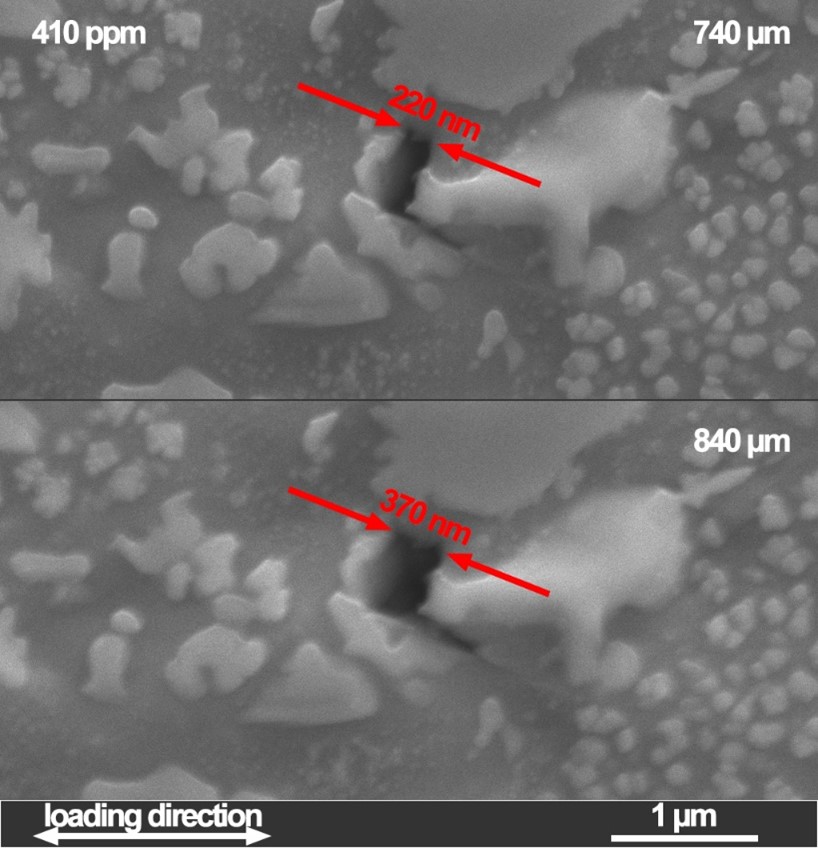
选取高温合金材料按照标准拉伸条进行制样。将制备好的拉伸条用800#、1200#和2000#砂纸逐级进行细磨,最后进行机械抛光、电解抛光、电解腐蚀。其中电解抛光所用的电解抛光液为:20vol.%硫酸+80vol.%甲醇,电解抛光电压为:15V,电解15s;电解腐蚀所用的电解腐蚀液为:170ml磷酸+10ml硫酸+15gCrO3,电解腐蚀电压为:2-5V,电解2-3s。采用配有扫描电子显微镜的原为拉伸试验仪进行原为拉伸试验。
在原为拉伸的过程中停载,观察γ-γ'相界开裂的演变过程,研究氧对γ-γ'相界开裂的影响机制。
Select the high-temperature alloy material and prepare the sample according to the standard stretching bar. The prepared stretch bars were finely ground step by step with 800#, 1200# and 2000# sandpapers, and finally mechanical polishing, electrolytic polishing and electrolytic etching were carried out. Among them, the electrolytic polishing solution used for electrolytic polishing is: 20vol.% sulfuric acid +80vol.% methanol, the electrolytic polishing voltage is: 15V, and the electrolysis lasts for 15 seconds. The electrolytic corrosion solution used in electrolytic corrosion is: 170ml of phosphoric acid +10ml of sulfuric acid +15g of cro3. The electrolytic corrosion voltage is: 2-5V, and the electrolysis lasts for 2-3 seconds. The original tensile test was carried out using an original tensile testing instrument equipped with a scanning electron microscope. During the in-situ stretching process, the stretching was paused at intervals of 100μm to capture the morphology and microstructure of the crack source.
During the original stretching process, the load was stopped to observe the evolution process of the cracking of the γ-γ' phase boundary and study the influence mechanism of oxygen on the cracking of the γ-γ' phase boundary.